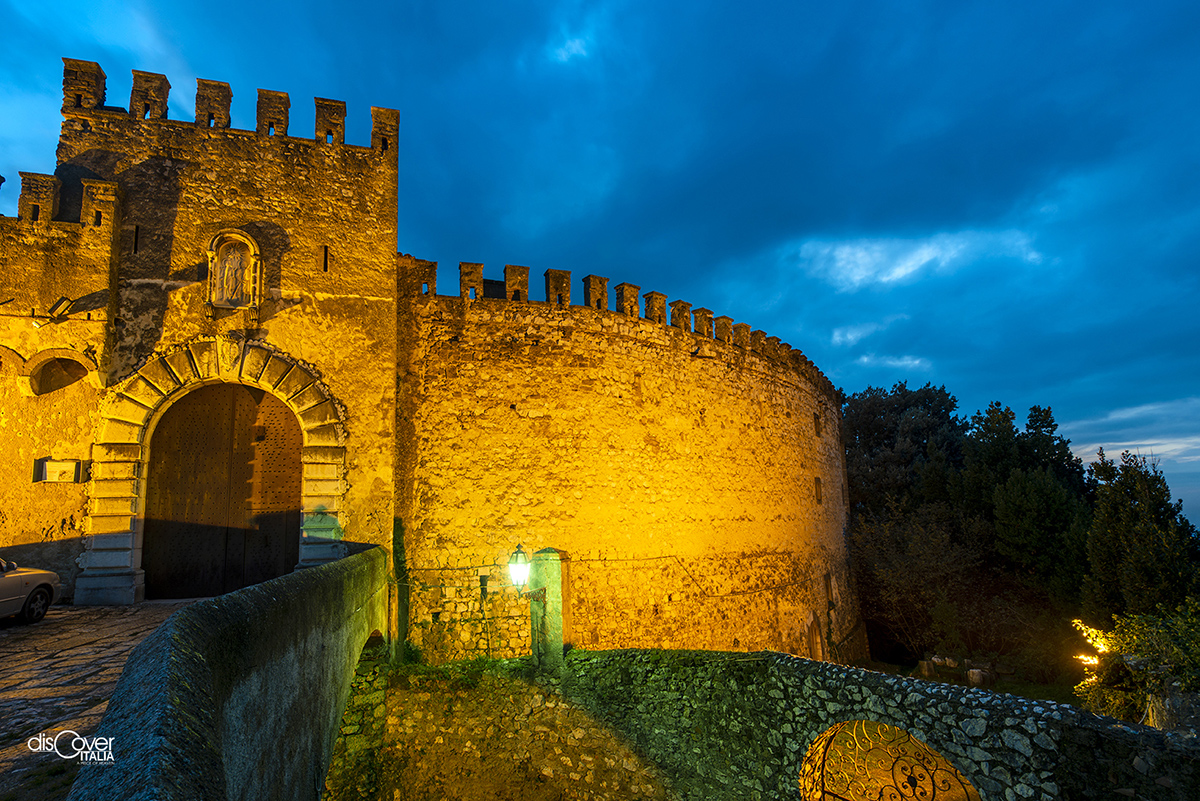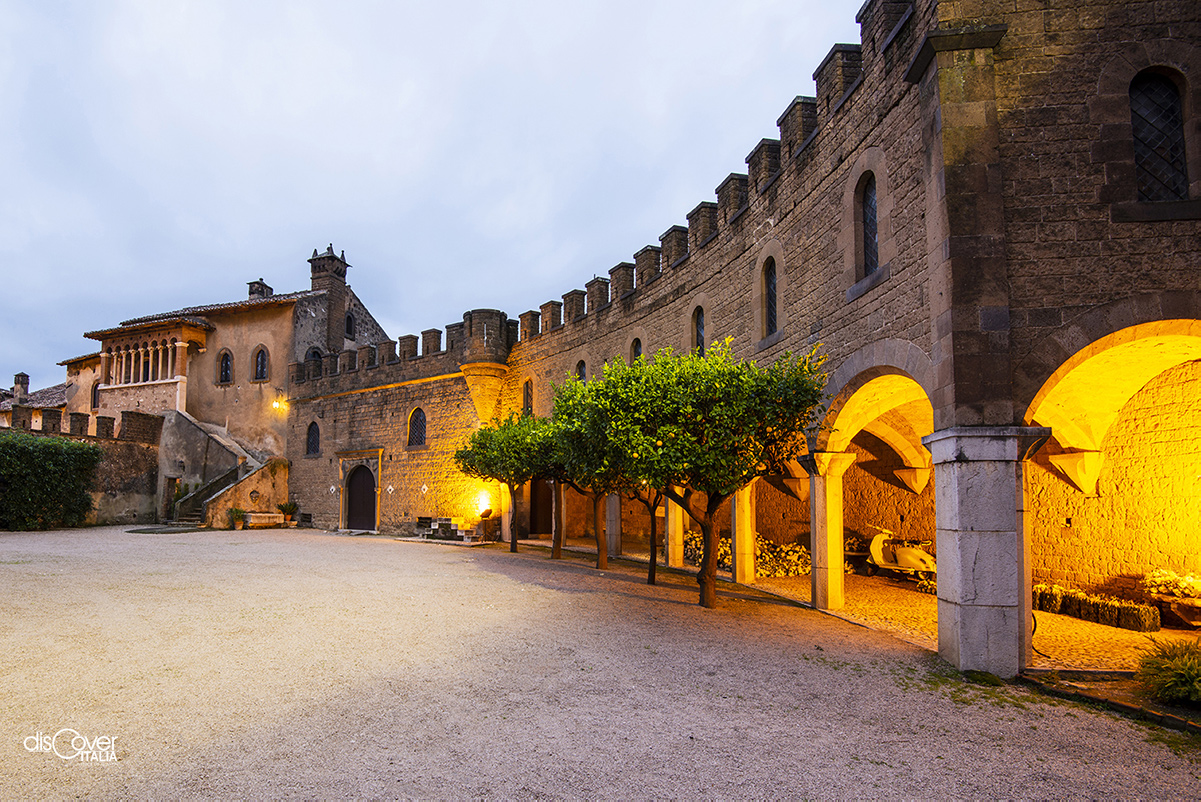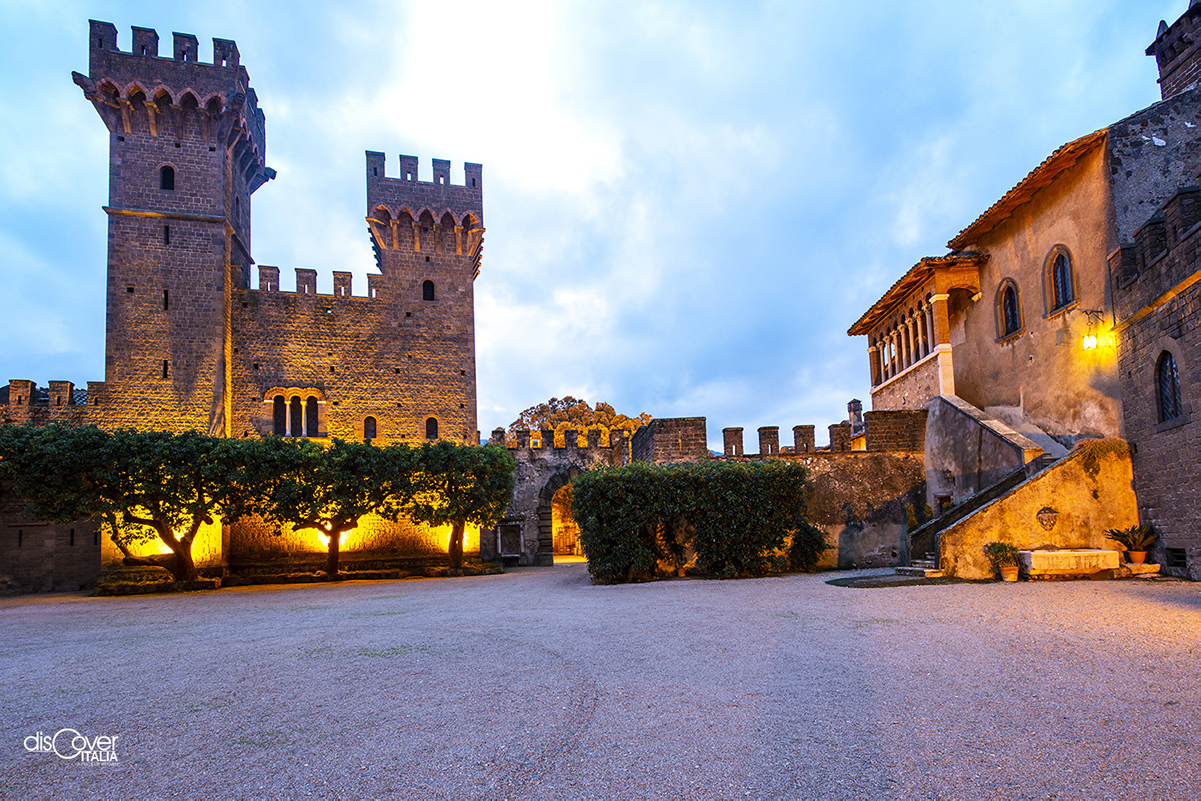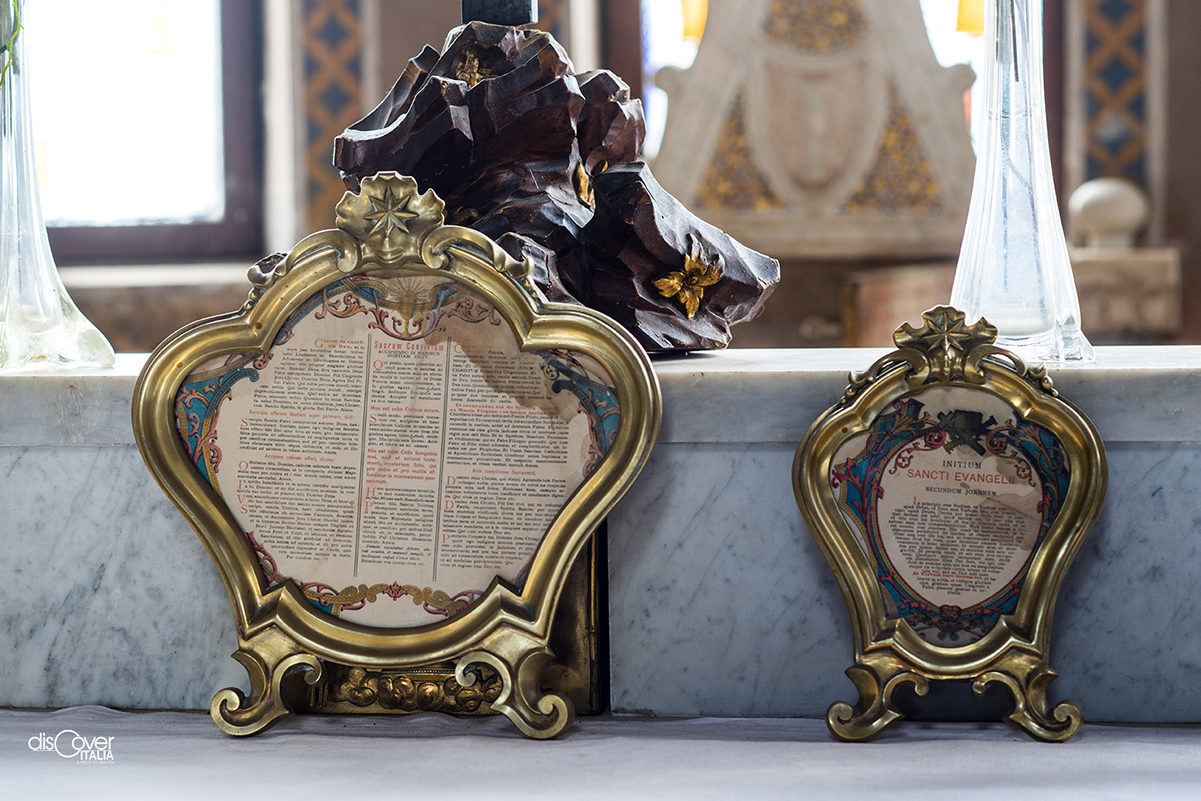It is an apparition that arouses amazement and admiration at the entrance to the Vallo di Lauro. As if it came out of a fairy tale, the magnificent Lancellotti Castle catches your eye. It rises with its towers, crenellated walls, imposing and mysterious appearance on the so-called “primo sasso”, because a Roman construction previously stood there.
 Witness of a long and important history, which began over a thousand years ago in the Lombard era, then inherited by the Normans, the manor is mentioned for the first time in a document of 976. In the registers of the Angevin chancery of 1277 reference is made to the assignment of its custody to Margaret de Toucy, cousin of Charles I of Anjou. Numerous noble families, among the most influential in the kingdom, had it among their possessions, the Sanseverinos and the Orsinis above all, until it was bought by the Roman princes Lancellotti in 1632.
Witness of a long and important history, which began over a thousand years ago in the Lombard era, then inherited by the Normans, the manor is mentioned for the first time in a document of 976. In the registers of the Angevin chancery of 1277 reference is made to the assignment of its custody to Margaret de Toucy, cousin of Charles I of Anjou. Numerous noble families, among the most influential in the kingdom, had it among their possessions, the Sanseverinos and the Orsinis above all, until it was bought by the Roman princes Lancellotti in 1632.

It is not the same castle as then, however, the one that can be admired today. During the turmoil of 1799, on 30 April, the French troops set it on fire, with enormous and irreversible damage. It took seventy years for Prince Filippo Massimo Lancellotti to decide to rebuild it, no less beautiful than before, in a composite style with elements of the styles corresponding to the eras of its previous history: Gothic, Renaissance, Neoclassical and Baroque. The inauguration took place on 25 August 1872 on the occasion of the celebrations for the patron saints.
Surrounded by walls with characteristic Guelph battlements, the 19th-century castle has several access doors, with a Renaissance-style wooden portal with rusticated ashlar. Various "representation" rooms can currently be visited: the Dining Room with a coffered ceiling, the Model Room, the Red Room with a collection of Syrian pharmaceutical objects, the Billiard Room with a precious late 19th century table, the Tapestry Room, the Libraryof over a thousand volumes including valuable sixteenth and seventeenth centuries, the Weapons Room, where ancient weapons and armor are exhibited.

Then there is the Chapel, with a trussed ceiling and frescoes depicting the friars in the land of Lauro; the bell tower and a cloister are not missing. The stable with a seventeenth-century statue houses carriages from the eighteenth and nineteenth centuries. There are two internal courtyards, one of which is adorned with a fountain, built with elements of "spoiling" from the Roman era. All around the manor there is a spectacular Italian garden with box hedges, where the large seventeenth-century park used to be; inside, moreover, there is a delightful secret garden. The panorama that is offered from the large terrace overlooking the Vallo di Lauro is magnificent.




Comments powered by CComment